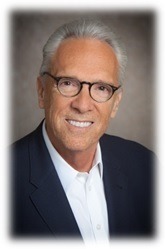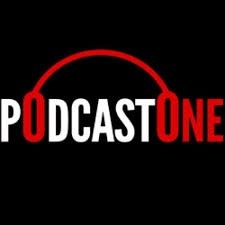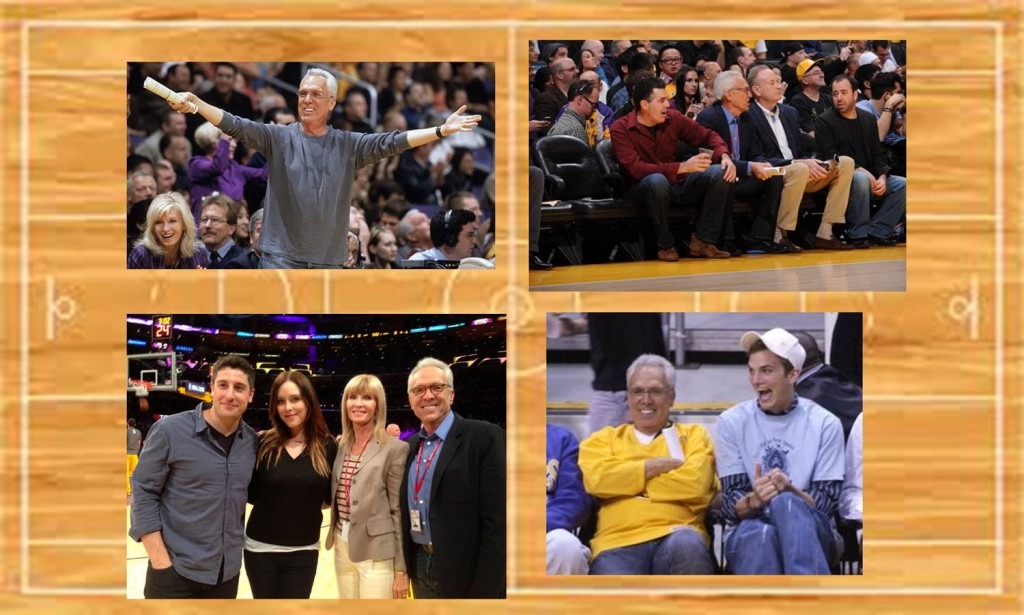If you’ve never known otherwise, you may not even think about how much syndicated programming has changed the face of radio programming, personalities, and content delivery. But in 1976, when Norm Pattiz launched Westwood One, there weren’t satellite receivers at every station, let alone FTP sites for distributing content. Syndicated programming wasn’t common like it is today and it surely wasn’t widely recognized as an effective advertising vehicle. But over the course of his 35 years at Westwood One, Pattiz played a major role in changing the game by growing the popularity of syndicated programming among listeners, while upping its value for advertisers. Today, it is a staple of the industry.
 Now he is on the front lines again, championing another new method for delivering audio content to consumers: podcasting. With PodcastOne, Pattiz has created a place where a star-studded group of hosts create compelling content about a nearly limitless variety of topics consumed by rabid fans. And where there is an audience, there are advertisers, with whom Pattiz is working to educate about the value of podcasting, or as he calls it, on-demand audio.
Now he is on the front lines again, championing another new method for delivering audio content to consumers: podcasting. With PodcastOne, Pattiz has created a place where a star-studded group of hosts create compelling content about a nearly limitless variety of topics consumed by rabid fans. And where there is an audience, there are advertisers, with whom Pattiz is working to educate about the value of podcasting, or as he calls it, on-demand audio.
So, for this week’s innovation Friday, we asked Norm to share reflections on his time at Westwood One, insights about the world of podcasting, thoughts about how the radio industry can adapt to the changing audio landscape, and, most importantly, what his beloved Los Angeles Lakers need to do to return to the glory days of “Showtime.”
JM: Let’s start with Westwood One. During your time there, what was the most innovative thing the network did and what inspired it?
NP: I founded the company and was there for 35 years, so narrowing it to one thing is impossible.
There’s producing, distributing, and monetizing our first program, The Sound of Motown, a 24-hour weekend special and producing individual programs for my first four advertisers which really got us moving. Getting into the concert business, building three state-of-the-art mobile recording studios and crisscrossing the nation was a big deal. And hiring KMET’s “The Burner,” Mary Turner, was important both because she’s been my wife for 30 years and she knew Bruce Springsteen, The Rolling Stones, The Who and every other major rock star. Her show, Off the Record, is the longest-running music interview show on radio, though no longer hosted by her.
Going public in 1984 and acquiring the Mutual Broadcasting System, the NBC radio networks, and Radio and Records are right up there, too. Our management deal with CBS was huge for Westwood One shareholders, and becoming a multi-billion dollar company with revenues of over half a billion dollars annually certainly made me smile. Being a middle class kid from West L.A. who figuratively gave birth to this company, which still exists decades later and opened the doors to other opportunities I could have never imagined, has been quite a trip.
JM: What led you to identify the opportunity for PodcastOne?
NP: A mutual friend introduced me to Kit Gray who was representing podcasts and selling them to advertisers. He reminded me of myself when I started Westwood One. He was working out of his apartment doing everything himself and having good success, though on a small scale.
 Podcasts, which are really radio/audio on demand, looked interesting. Upon further investigation, I was surprised to find there were no major players in the space. No one had the critical mass or deep enough pockets to go to Madison Avenue and create demand. I got very excited. It’s Westwood One for the digital age without the restrictions of radio formats, program directors’ individual tastes or the difficulties of navigating radio programming during a time of ultra-consolidation, heavy debt loads and 400-pound gorillas.
Podcasts, which are really radio/audio on demand, looked interesting. Upon further investigation, I was surprised to find there were no major players in the space. No one had the critical mass or deep enough pockets to go to Madison Avenue and create demand. I got very excited. It’s Westwood One for the digital age without the restrictions of radio formats, program directors’ individual tastes or the difficulties of navigating radio programming during a time of ultra-consolidation, heavy debt loads and 400-pound gorillas.
JM: So what makes a great podcast?
NP: There are a ton of things that make a podcast great. But to be great for me it has to have an audience in the hundreds of thousands, a host who understands the importance of content to an advertiser, and someone who thinks PodcastOne is a good place to be.
JM: What has been the biggest hurdle you’ve encountered so far in launching and growing the platform? How did you overcome it?
NP: Having the experience of launching and building Westwood One has helped a lot because the hurdles are similar. In the early days, the radio syndication business was very much like podcasting is today, lacking reliable metrics, general visibility, and players with critical mass. Advertisers haven’t gotten what they required to get comfortable with the medium, which has resulted in major brands with a lack of knowledge and interest.
But it hasn’t been that difficult to overcome. I’ve got almost 40 years of relationships with associates, advertisers, talent and all the other areas that support them. Plus, in addition to Kit Gray, it helps having Gary Yusko and Greg Batusic, who were with me at Westwood One, as part of the executive management team. And even though the rest of our 25 team members seem like teenagers by comparison, they’re not. They are young, bright, eager and excited to be part of an enterprise that’s radio, audio, and digital all rolled into one with no limits in sight.
JM: What trends are you seeing in the types of content and consumption patterns on PodcastOne?
NP: The trends are no trends, all trends, and no limitations. If there’s a fan base, interest in a subject and the potential of attracting an audience, we’re interested. Comedy and technology launched podcasting when consumption wasn’t the easiest thing. Today, iPhones, Androids, tablets, computers, and Bluetooth make podcasting so simple, mobile and available whenever and wherever the consumer wants to access the content. So, spoken word on demand audio content on any subject — sports, politics, music, lifestyles, entertainment, business, science, the arts, or Snooki’s latest pregnancy — are all out there with millions of social followers and podcast consumers creating billions of impressions for advertisers.
JM: You have some big stars on PodcastOne. How essential is that to the success of a podcast?
NP: PodcastOne stars? Sure, plenty. Adam Carolla, Radio Lab, Stone Cold Steve Austin, Chris Jericho, Nicole Polizzi (aka Snooki), Dr. Drew, Dan Patrick, Dennis Miller, Kathie Lee Gifford, Brett Easton Ellis, Penn Jillette, Jay Mohr, with Larry King, Pawn Stars’ Rick Harrison, and Rich Eisen on deck. Plus, a couple of hundred others who are downloaded over 120 million times every month. Yeah, we’ve got stars.
JM: How do you “identify” and “recruit” the next generation of stars?
NP: When was the last major national star created in radio? It’s been quite a while. National stars are created in podcasting weekly. They come from other mediums, social media, YouTube, Facebook, Twitter, TV and radio, music and parts unknown. They are unconstrained by formatics, station groups, program directors, and tastemakers. This is audio democracy in its ultimate form. Let the listeners, consumers, and the market decide.
JM: Adam Carolla is probably best known as the first mega-radio star to step away from a successful broadcast career to make his way in the world of podcasting. What’s something we don’t know about him that’s really interesting?
NP: His middle name is “Lakers.” That’s no bull. It’s true. He doesn’t have a middle name and when he went to get his driver’s license, they asked for one. “Lakers” was the first thing that popped into his head. We’ve been in love ever since.
JM: In an LA Times article, you said, “You can’t look at radio as a brick and mortar operation, and consumed on a radio over a certain frequency. That’s a recipe for disaster.” What suggestion could you give broadcasters trying to adapt in this rapidly changing audio environment?
NP: Embrace the change. Make it part of radio and think of the possibilities for local engagement. The old definition of radio shouldn’t exist anymore because growth in that area alone is over. But by embracing the content and making it additive to traditional terrestrial radio, the medium will grow, as will every segment that contributes to it. And stop giving it away as value added; it has significant value on its own.
JM: What do you say to those who claim that monetizing new media – like streaming or podcasting – will never be successful or profitable?
NP: Bullshit!
JM: What is the largest impediment to innovation in the broadcast radio business?
NP: Ownership and debt loads.
JM: What would you say to someone with an innovative idea for radio who isn’t sure how to get it going?
NP: Start it online. You may find traditional radio unnecessary.

JM: And finally, as a fan who has sat courtside for over 30 years, what kind of innovation do the Lakers need to adopt in order to become an NBA powerhouse again?
NP: I have had such joy being a Lakers fan that it causes me real pain to say that I have no brilliant insight into that subject. Players, coaches, ownership, and I all pray to God that Kobe returns as the player he wants and needs to be to keep fans like me from slitting their throats.
Thanks to Mike Stern for writing this “RMI” profile.
INNOVATION QUOTE OF THE WEEK
“Fail often and fail cheap.”
Paul Sloane, Scottish author and businessman
More of Radio’s Most Innovative
- Radio’s Most Innovative: Greater Public’s Doug Eichten
- Radio’s Most Innovative: Innovate This
- Radio’s Most Innovative: Dr. Ruth Westheimer
- Radio’s Most Innovative: Delilah
- Radio’s Most Innovative: GenX.fm (or “What We Did Over Memorial Day Weekend”)
- Media And Technology In 2025: Believe It Or Not! - April 18, 2025
- In Radio, You Just Never Know - April 17, 2025
- The Secret To Making A Great Podcast (And Great Radio) - April 16, 2025





Leave a Reply